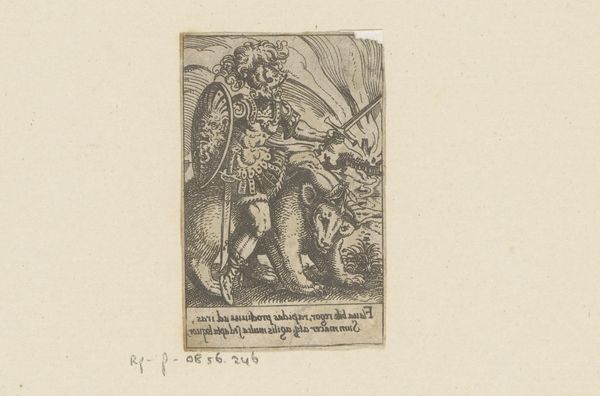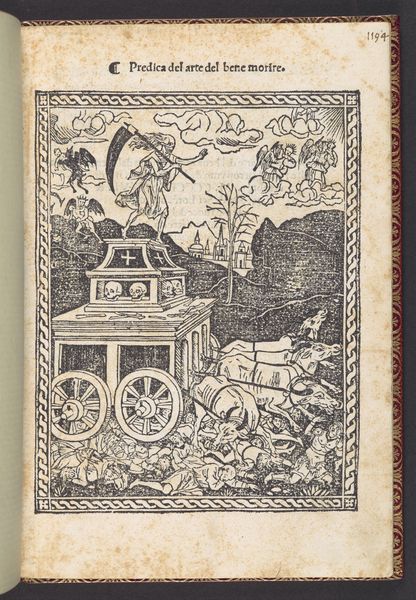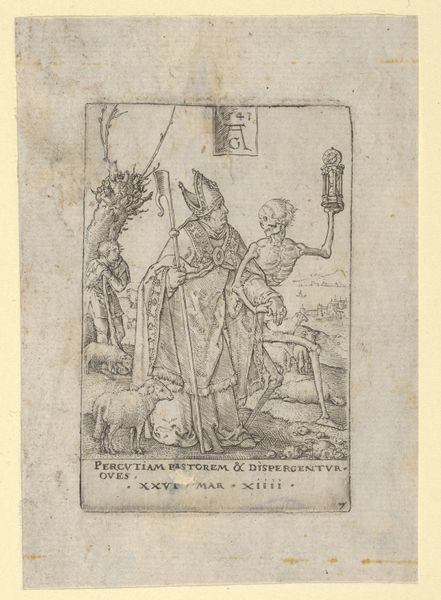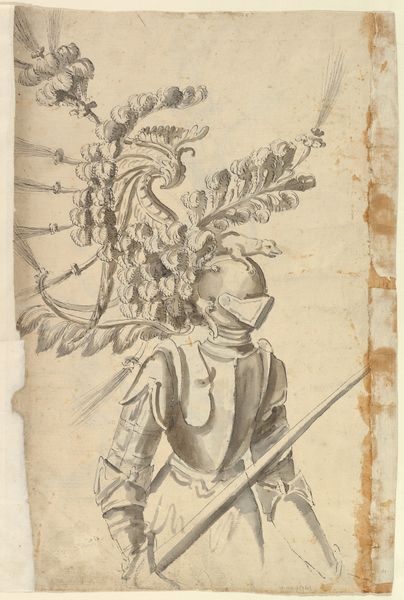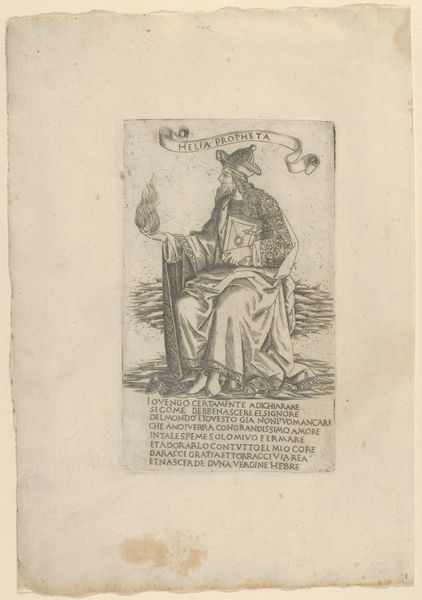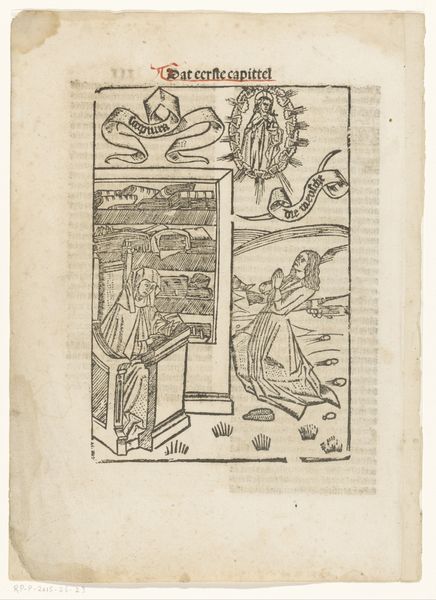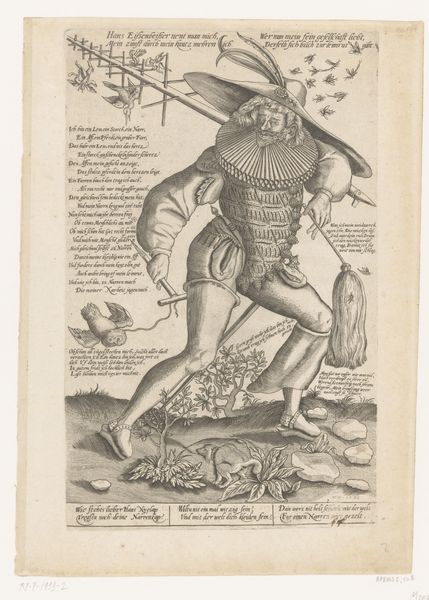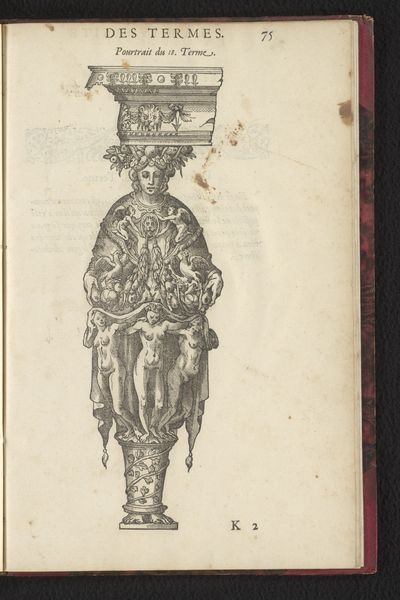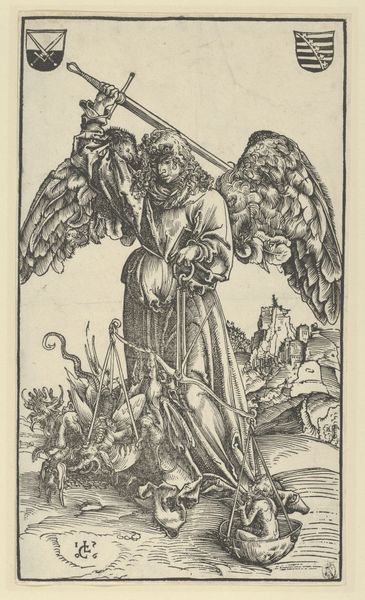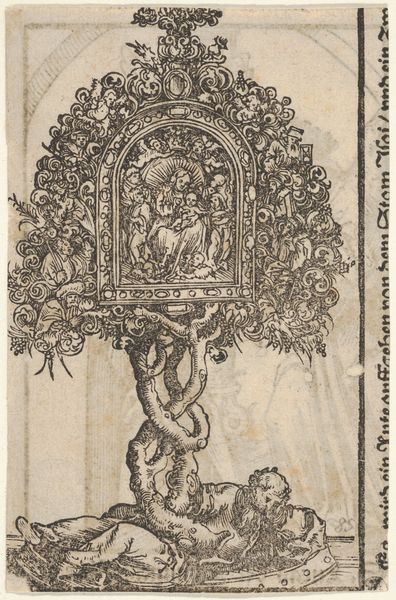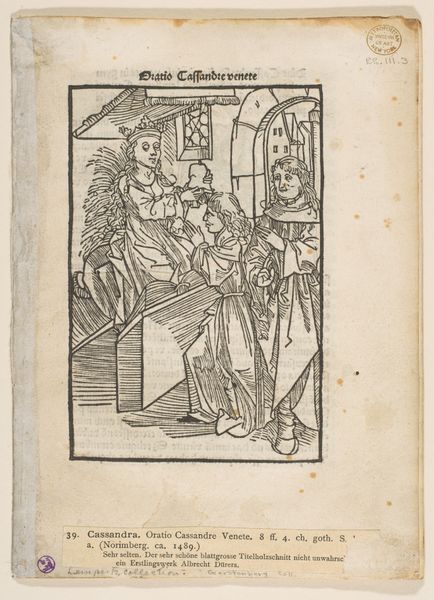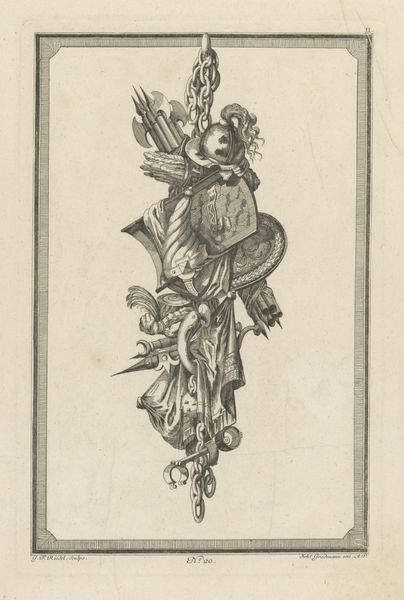
drawing, graphic-art, print, woodcut
#
drawing
#
graphic-art
#
medieval
#
narrative-art
# print
#
figuration
#
11_renaissance
#
woodcut
#
line
Dimensions: 8 1/2 x 5 3/4 in. (21.59 x 14.61 cm) (plate)9 3/8 x 6 15/16 in. (23.81 x 17.62 cm) (sheet)11 15/16 x 9 3/16 in. (30.32 x 23.34 cm) (mount)18 x 14 in. (45.72 x 35.56 cm) (mat)
Copyright: Public Domain
Editor: We are looking at "Lintpurg," a woodcut dating back to the 16th century by James Kerver. I'm struck by the sheer amount of detail that’s gone into this small print, especially the armor and the buildings in the background. What are your initial thoughts on this work? Curator: For me, it's about the process of production itself. This woodcut wasn't just a visual representation; it was a crafted object. Think about the labor involved in carving those intricate lines into the woodblock. The final print embodies a specific kind of material labor and, simultaneously, would have facilitated the distribution of imagery across social strata. Editor: That’s interesting! I hadn’t thought about the labor aspect so explicitly. How does that affect our understanding of it? Curator: The means of production greatly informed the artwork. A woodcut allows for multiple reproductions, signifying a wider reach of Kerver's image to a broad audience than say a unique painting. Who were the consumers of this print and what function did the image serve? Editor: It almost democratizes the image, doesn't it? A way of distributing power or perhaps news... Curator: Precisely. Considering the historical context of the printing press's burgeoning influence is critical to interpreting its societal function. The consumption of the work as much as the process of its production carries important meaning. Editor: So, understanding how "Lintpurg" was made, and who it was made for, provides a richer understanding than simply analyzing the imagery. Curator: Exactly. It transcends just being an artistic creation; it is also a historical artifact embodying technological progress, skilled labor, and a specific culture of consumption. Editor: That gives me a completely new way of looking at early printmaking. Thanks for sharing! Curator: My pleasure. It’s in recognizing the material realities that shaped art production that we find deeper meaning.
Comments
No comments
Be the first to comment and join the conversation on the ultimate creative platform.
